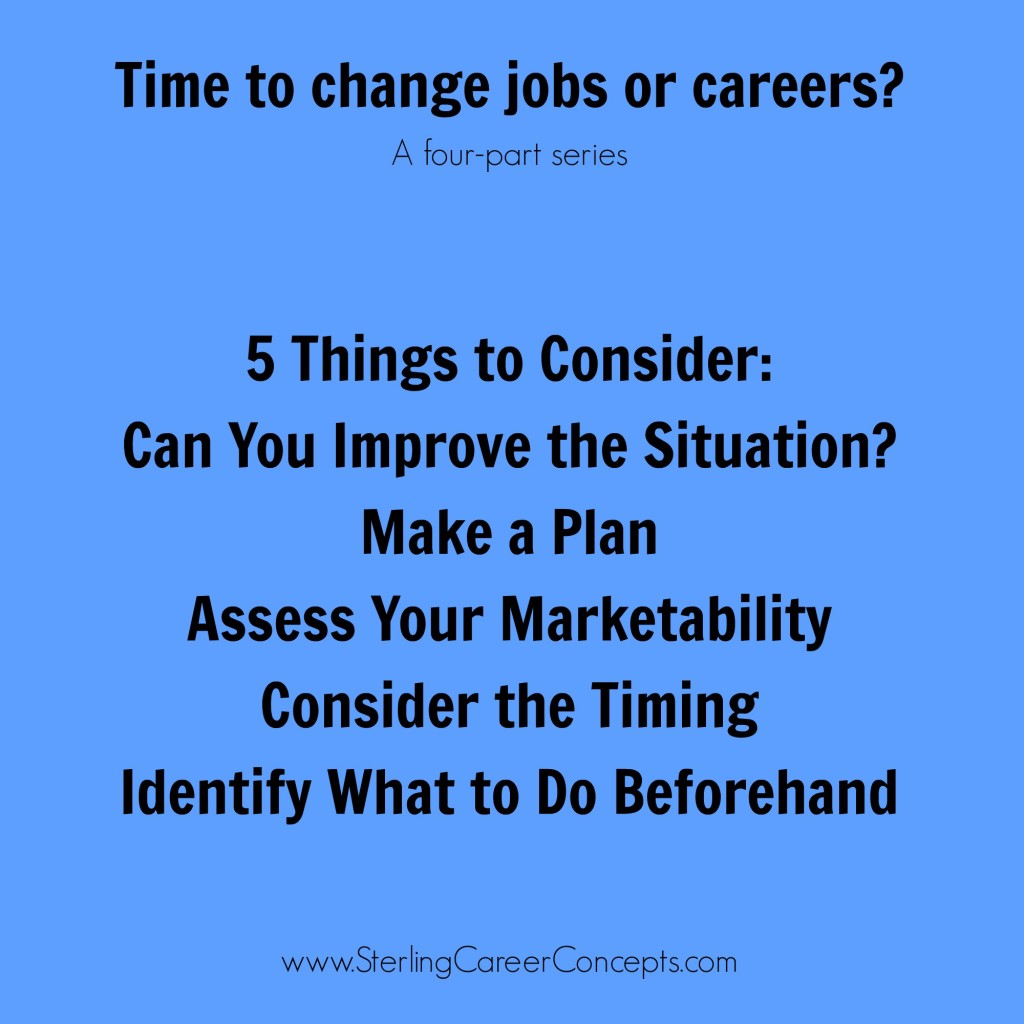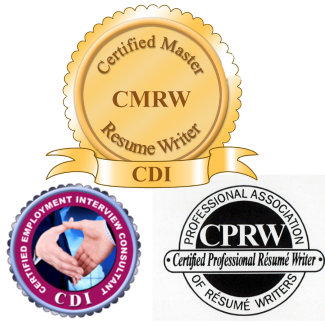Once you’ve identified reasons for wanting to make a change, ask yourself this: “Is there an opportunity to improve my current situation?” Some things may be temporary and resolve themselves, but the other piece of the puzzle is you.
1. Is there anything you could do to improve the situation? For example, could you transfer to a similar position in a different part of the company? Could you talk to your supervisor and see if there are opportunities for additional responsibility or advancement that you may not be aware of? Could improving your skills (for example, pursuing additional education, training, or certifications) help you?
2. If you feel the situation can’t be improved, the next thing to do is develop a plan before making any change. Think before you act — don’t be impulsive. Change can be difficult — the bigger the change, the more difficult it may be. You also want to make sure you’re running towards something you want to do, and not running away from something you don’t. Being impulsive may lead you to do something you may later regret — like one of those viral “I Quit” videos that are fun to watch, but may lead to long-term ramifications when prospective employers Google your name.
3. Assess your marketability at another company or for another career path. What skills, education, and experience do you have to offer? Inventory your accomplishments. A potential move could be to another company in your industry or in a new one. You could also return to school either on a part- or full-time basis to earn a graduate degree that could help pivot or accelerate your career options.
4. Consider the timing of making a change, if you decide that’s what you want to do. For example, you may not want to leave your job in November if you’d earn an annual bonus if you stayed another month. The same is true for things like vested options in a stock plan or retirement account — make sure you manage the timing of your departure to maximize your benefits. Basically, don’t leave money on the table if you can help it.
5. Along with considering the timing of your departure, do you need to do some things before you change jobs or careers? Perhaps you need to take some classes or earn a certification before you’ll be prepared to make a job or career change. Create a Personal/Professional Development Plan (PDP) for yourself, outlining the steps you need to take to bridge the gap between where you are now (skills, education, and experience) and what you need in your new job or career. Checking off as many of those items as you can will help make the transition smoother.
Finally, keep in mind that it’s easier to find a job when you have a job, so don’t just quit your job. And don’t burn bridges at your former employer, if you can help it. Do the right thing by giving ample notice, offering to train your replacement, and preparing a checklist or cheat sheet for your replacement.
The next and final article in this series will share six practical strategies for a smooth transition.


